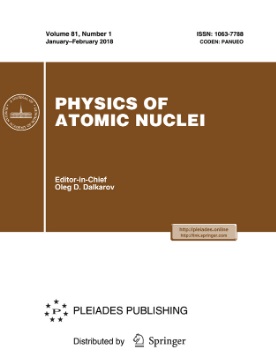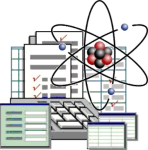 Recent Applications of Nuclear Track Emulsion Technique
Recent Applications of Nuclear Track Emulsion TechniqueDOI: 10.1134/S1063778816130093
P.I. Zarubin
11 P.
Physics of Atomic Nuclei, 2016, Vol. 79, No. 13, pp. 1525–1535
Ключевые слова: nuclear track emulsion, alpha-particles, neutrons, heavy ions, automated microscope, fission, cyclotron
A survey of recent results obtained using the nuclear track emulsion (NTE) technique in low energy
applications is given. NTE irradiation with  MeV
MeV  nuclei
provides identification of their decays at stopping,
evaluation of the possibility of
nuclei
provides identification of their decays at stopping,
evaluation of the possibility of  range spectrometry, and observation of drift of thermalized
range spectrometry, and observation of drift of thermalized
 atoms.
Correlations of
atoms.
Correlations of  particles studied in
particles studied in  splitting induced by
splitting induced by  MeV neutrons indicate the presence
of a superposition of
MeV neutrons indicate the presence
of a superposition of  and
and  states of the
states of the  nucleus in the ground state of
nucleus in the ground state of  . Angular correlations of
fragments are studied in boron-enriched NTE, and the prospects of NTE application in radioactivity and
nuclear fission research are discussed. It is proposed to use an automated microscope to search for collinear
tripartition of heavy nuclei implanted in NTE. Surface irradiation of NTE by a
. Angular correlations of
fragments are studied in boron-enriched NTE, and the prospects of NTE application in radioactivity and
nuclear fission research are discussed. It is proposed to use an automated microscope to search for collinear
tripartition of heavy nuclei implanted in NTE. Surface irradiation of NTE by a  source is started. Planar
events containing fragment pairs and long range
source is started. Planar
events containing fragment pairs and long range  particles, as well as fragment triples, are studied. NTE
samples are calibrated using
particles, as well as fragment triples, are studied. NTE
samples are calibrated using  and
and  ions with an energy
of
ions with an energy
of  and
and  A MeV.
A MeV.



